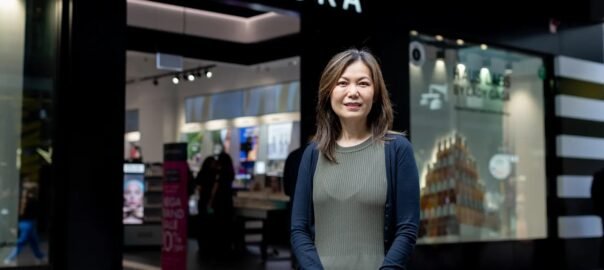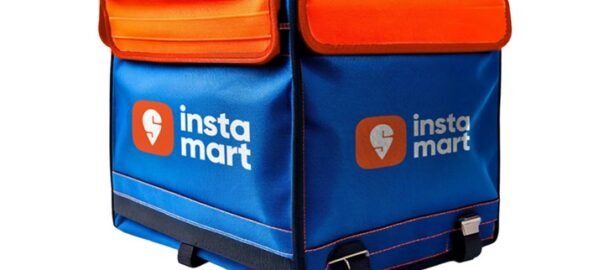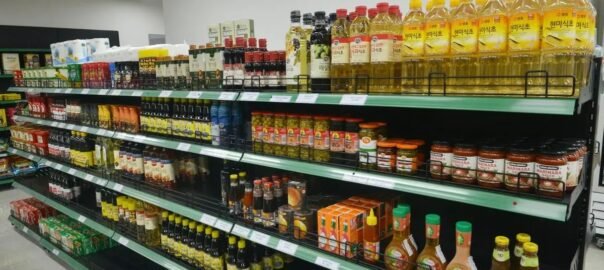Stroll down any major shopping thoroughfare in Australia and you’ll come across dozens of beauty retailers jostling for your attention. Mecca, Wesfarmers’ Priceline and smaller retailers such as W Cosmetics have all carved out a cosmetic counter of their own in the market.
Among them is Sephora, the American brand owned by luxury conglomerate LVMH.
Since entering Australia in 2014, Sephora has expanded to 32 stores (with 3000 stores globally), including a new store in Bankstown in Sydney’s south-west. The company plans to open two more stores by year’s end.
Sephora generated $315.8 million in revenue between 2019 and 2023 with net loss profit after tax of minus $13.7 million, according to data from IBISWorld, although Sephora reports the average spend in 2025 has seen double-digit growth compared to pre-COVID 2019 levels.
Despite recent gains, IBISWorld data shows it commands 6.1 per cent of the market while Mecca maintains a 21.4 per cent stake hold.
Jenny Cheah, Sephora’s Singapore-based managing director in South-East Asia, Oceania and India, says Australia remains a key focus for the brand.
“Australian consumers are extremely sophisticated. They understand beauty trends very well, are educated, and we want to be here with them for their journey in beauty,” she says.
It’s a competitive sector. Market share concentration in the beauty sector remains low, with a high number of smaller retailers, leaving room for other players to lay claim to a slice of the pie.
To this end, Wesfarmers has been expanding its beauty offerings in Priceline and a new dedicated beauty store atomica, while Adore Beauty launched its first bricks-and-mortar store in Melbourne last year after 25 years in business.
Dr Marian Makkar, a senior marketing lecturer at the Royal Melbourne Institute of Technology, says differentiation is a key challenge for multi-brand retailers. Exclusive brand partnerships and a warm, bespoke customer service experience with an emphasis on bricks-and-mortar retail are central.
“When you go into the retail space itself, you want to feel like an exclusive customer,” she says.
For Mecca, staff training is an essential part of the offering, with the brand investing four per cent of turnover in education.
“Our team members are true beauty experts – deeply knowledgeable about our brands, products, and application techniques – and skilled at sharing that expertise in a warm, engaging, and high-touch way,” the company told this masthead.
While Sephora’s two main competitors in Australia – Mecca and Priceline – are Australian-owned, Cheah thinks its international positioning gives the brand an edge.
“We go back to the profile of our consumers, and they’re more well travelled. The fact they come to Sephora, they can shop anywhere in the region and they will still be able to earn points,” she says.
“We bring global brand equity and exclusive brand partnerships.”
Makkar attributes Mecca’s success in part to its high concentration of exclusive brands (around 80 per cent). It appears to be working, with revenue growing from $971.5 million in 2022 to an estimated $1.3 billion for the 2025 financial year.
Sephora was unable to say what percentage of its more than 500 brands were exclusive, but it’s clear that it’s a strategy pivotal to retailers’ success, at a time when consumers can order online or buy in store.
This month, Sephora will add Lady Gaga’s Haus Labs to its stable of Sephora-only brands in the Asia-Pacific region, which also includes Selena Gomez’s Rare Beauty and Rihanna’s Fenty Beauty. First launched in 2019 on Amazon, Haus Labs relaunched in 2022 with Sephora. Cheah thinks this has been key to it becoming one of the highest-earning celebrity beauty brands today.
“With all due respect to Amazon, I think Haus Lab’s story is better communicated [at Sephora], and I think the brand appreciates that out of us as well,” says Cheah.
In today’s oversaturated market of celebrity beauty brands, it takes more than a famous face to move product.
“Consumers today are so savvy. They won’t spend money on products that don’t work, no matter how inexpensive they are,” says Cheah.
She thinks Haus Lab’s focus on “clean beauty” (defined by Sephora as products free from ingredients such as phthalates, sulphates and parabens), skincare-based make-up and focus on social issues (a portion of every sale goes to support Gaga’s charity, Born this Way Foundation) have all contributed to its success.
In June, Sephora and Haus Labs will create 31 activations across Australia in line with Global Pride Month.
Cheah says Haus Lab’s foundation is the top-selling foundation in US Sephora, with similar hopes for the Australian market.
Sephora has made a concerted effort to support Australian beauty brands too – most notably Ultra Violette, a sun care brand that’s seen rapid success since launching in 2019.
Ultra Violette is sold exclusively in store at Sephora Australia, and has recently entered into the US and Asian markets, again with the help of Sephora.
But securing that coveted “exclusivity” can be tough – Ultra Violette is also available direct from its website and on The Iconic. Cheah is pragmatic.
“A brand deserves to have the brand available to consumers in the way they would like to be. We cannot put a frame around that,” she says.
“In some cases, like Ultra Violette, we would love for them to just be in Sephora and only in Sephora because that gives them a greater marketing edge as well with us.”
Indeed, when brands have the ability to go direct to consumer, why enter an exclusive partnership with a retailer like Sephora?
Cheah says a partnership offers a brand access to their global supply chain, consumer data, merchandising and advice on product development. And she thinks having multiple fronts in different retailers can confuse shoppers about a brand’s messaging.
From a consumer standpoint, Makkar says multi-retailers offer convenience for busy shoppers.
“People are looking for a one-stop shop … you have options all the way from Australian brands, all the way to international brands.”
Author Credits: Lauren Ironmonger
The Sydney Morning Herald










